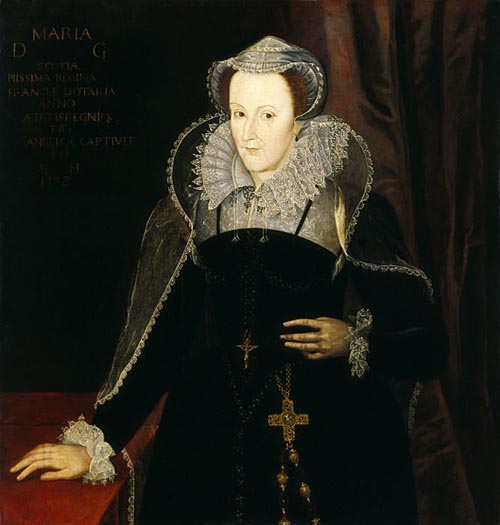MARAUDING Vikings and a Scottish Queen will both appear at the National Museum of Scotland, Edinburgh next year as part of its 2013 exhibitions programme.
These major new shows will be Vikings, from the Historiska Museet in Stockholm and Mary Queen of Scots, a new exhibition curated by National Museums Scotland and drawn from the Scottish collections supported by international loans.
For many, this programme will be a once in a lifetime opportunity to see these internationally significant exhibitions.
One exhibition will focus on Mary Queen of Scots
The Museum will be the only UK venue for Vikings and Mary Queen of Scots is a one-off exhibition being created specially for the National Museum of Scotland and showing only in Edinburgh.
Vikings will explore the Viking Age and challenge our conceptions of what has become a mythical period in Scandinavia. In recent years archaeological discoveries have shed new light on the period and this exhibition will tell the Viking story through unique objects which have been rarely viewed outside Scandinavia.
Mary Queen of Scots is arguably one of the most enigmatic figures in Scottish history. Her story arouses strong emotions: was she betrayed by those she trusted, condemned to die a catholic martyr or was she a murdering adulteress with her husband’s blood on her hands?
The exhibition will provide an opportunity to re-visit much that has been written and speculated about Mary, one of the most charismatic monarchs of all time. Taking a fresh, innovative approach, using jewels, textiles, furniture, documents and portraits, Mary’s dramatic story and this fascinating period in Scottish history will be explored in detail.
George Dalgleish, Keeper of Scottish History and Archaeology commented: “We are delighted to be bringing two major exhibitions of key periods in Scottish and Scandinavian history to the National Museum of Scotland for 2013. Over 500 objects from the world-renowned collections of the Historiska Museet in Stockholm will form the basis of Vikings, providing a unique opportunity to view these exciting exhibits.
“I know that Mary Queen of Scots will prove a hugely popular exhibition as there is a continuing fascination with her life story which has over decades been the subject of many books, plays and films. Drawing together surviving relics intimately connected with Mary Stewart and wider Renaissance material from public and private collections, the exhibition will tell the incredible story of the sovereign and the woman.”
Vikings explores the perceptions of the Vikings as warriors, explorers, pirates and merchants. The exhibition gives fascinating insights into death rituals, the power of mythology and the symbolism of the Viking ships, their crafts and workmanship and also their domestic lives. Among the objects on display will be spectacular jewellery and metalwork, textiles, glass, bone, amber and religious artefacts.
Craft, especially metal craft had metaphysical and mythological significance in the Viking Age and the treasures in the exhibition will showcase their astonishing workmanship. The displays will include a silver pendant crucifix, a stunning silver necklace in the form of the fertility goddess, Freyja and a brooch of gold, bronze and garnet.
Mary Queen of Scots was one of a number of female rulers in Renaissance Europe and she will be considered in this context, examining her power and influence, making comparisons with her peers. She was an important figure dynastically and key in the religious struggles provoked by the Reformation. Through her son she is the direct ancestor of the present royal family.
Mary brought many splendid pieces of jewellery from France when she returned to Scotland in 1561. She continued to patronise Scottish goldsmiths and jewellers throughout her reign in Scotland.
However, few examples survive, but the remarkable pieces which will be displayed include the Penicuik jewels incorporating two portrait lockets believed to be of herself and her son James, a heart jewel and a cameo ring.
An intriguing item is the silver ryal or 30 shillings coin which commemorated the marriage of Mary, Queen of Scots and Henry, Lord Darnley. This was struck in Scotland in 1565 and then quickly withdrawn from circulation. It was then redesigned in 1566 with Mary’s image and name appearing before that of her husband.
This fascinating exhibition, exploring the life and times of Mary, will bring together an array of treasures never before seen together.

